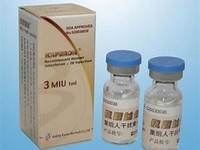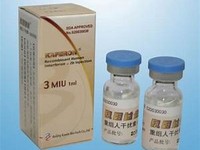Cyclophosphamide

Cyclophosphamide
CLINICAL USE
Alkylating agent:Immunosuppression of autoimmune diseases including rheumatoid arthritisTreatment of malignant diseaseDOSE IN NORMAL RENAL FUNCTION
Autoimmune disease: Oral: 1–2.5 mg/kg/day —IV: Usually 0.5–1 g/m —2 or 10–15 mg/kg repeated at intervals, e.g. monthly (pulse therapy)Malignant disease: Oral: 50–250 mg/m —2 daily or according to local protocolPHARMACOKINETICS
DOSE IN RENAL IMPAIRMENT
GFR (mL/MIN)
DOSE IN PATIENTS UNDERGOING RENAL REPLACEMENT THERAPIES
IMPORTANT DRUG INTERACTIONS
Potentially hazardous interactions with other drugsAntipsychotics: avoid concomitant use with clozapine, increased risk of agranulocytosisCytotoxics: increased toxicity with high- dose cyclophosphamide and pentostatin – avoid concomitant useADMINISTRATION
Reconstition
Add 5 mL water for injection to each 100 mg (sodium chloride 0.9% for Endoxana)Route
Oral, IVRate of Administration
Directly into vein over 2–3 minutes, OR directly into tubing of fast running IV infusion with patient supineComments
IV route occasionally used for pulse therapy. Can be administered as an IV infusionInjection can be administered orally down an NG tubeOTHER INFORMATION
Prodrug – converted by hepatic microsomal enzymes to alkylating metabolites (great inter-patient variability in metabolism). Excretion primarily renal. Reduce IV dose to 75% of oral dose, bioavailability is 75%Cyclophosphamide and its alkylating metabolites can be eliminated by dialysisPatients receiving chronic indefinite therapy may be at increased risk of developing urothelial carcinomaIf patient is anuric and on dialysis, neither cyclophosphamide or its metabolites, nor Mesna should appear in the urinary tract. The use of Mesna may therefore be unnecessary, although this would be a clinical decisionIf the patient is still passing urine, Mesna should be given to prevent urothelial toxicity
See how to identify renal failure stages according to GFR calculation
See how to diagnose irreversible renal disease
Home



.JPG)




